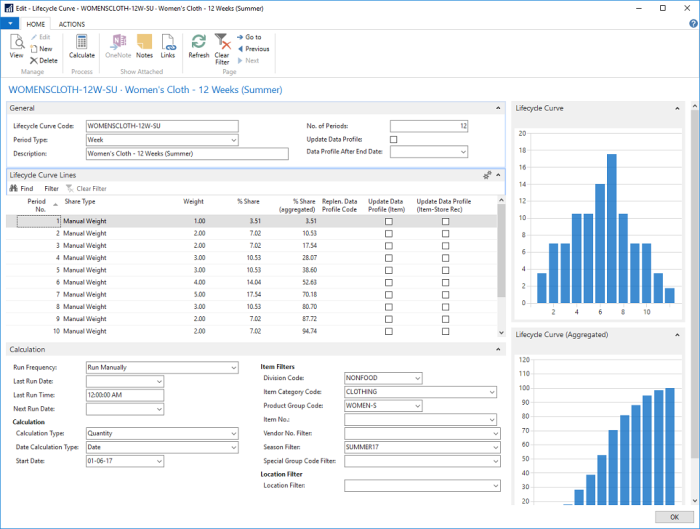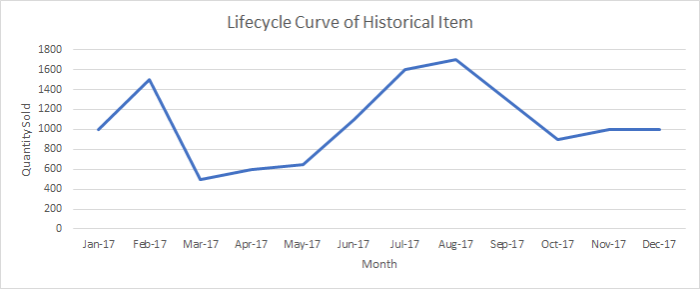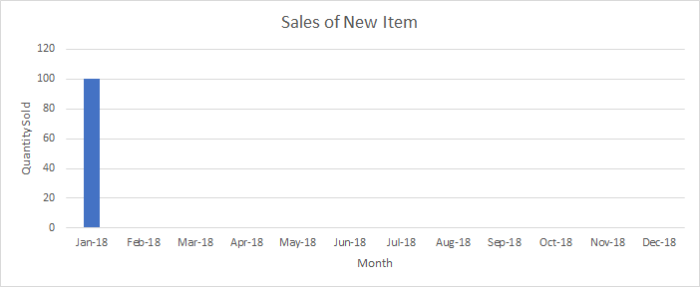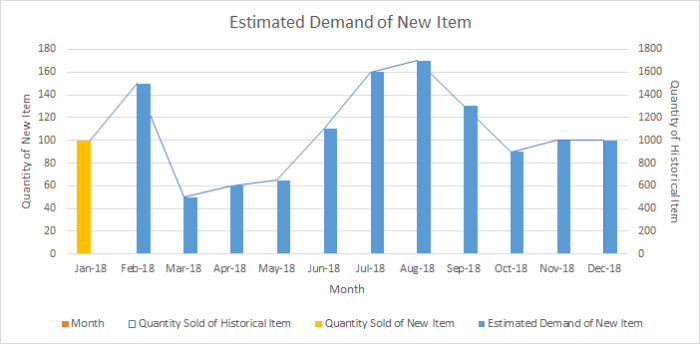A Lifecycle Curve is a concept in LS Central Replenishment which describes a product's sales behavior or sales pattern. Most products are not sold evenly across their lifecycle. A product may have a slow start, a strong sales in the middle of its lifecycle, and a slow end when it phases out.
Lifecycle Curves can be created manually or calculated from historical sales data in the system.
A Lifecycle Curve is used in the calculation of Store Stock Redistribution. The system will calculate the store's available supply and the store's estimated demand for an item based on the sold quantity until today and the lifecycle curve assigned to the item.

Lifecycle Curve concept
The major problem with forecasting the demand for a new product is that there is insufficient historical sales data to work with. The lifecycle curve concept uses the historical sales data from previous or similar products to forecast a new product's estimated demand as shown below:


In the scenario above, in January 2018, the user would like to forecast the estimated demand the next 11 months for a newly launched product.
The new product is expected to sell in a similar way as other products whose sales behavior is already captured in the Lifecycle Curve of Historical Items. This curve could represent the sales behavior of all items in a specific item group or a specific brand in a comparison time frame, like a previous season or year.
The Estimated Demand of the new product can be calculated based on Quantity Sold until today of the new product and the assigned Lifecycle Curve of Historical Item:

The more periods with a Quantity Sold are used for the calculation, the more accurate the prediction will be.
The tasks listed below describe the setup steps for Lifecycle Curves:
| To | See |
|---|---|
| Set up a Lifecycle Curve. | How to Setup Lifecycle Curves |
| Calculate a Lifecycle Curve. | How to Calculate Lifecycle Curves |
| Assign a Lifecycle Curve to Items. | How to Assign to Items |
| Update a Data Profile for Item or Item Store Rec. | How to Update Data Profiles |
See Also
Redistribution Calculation Types